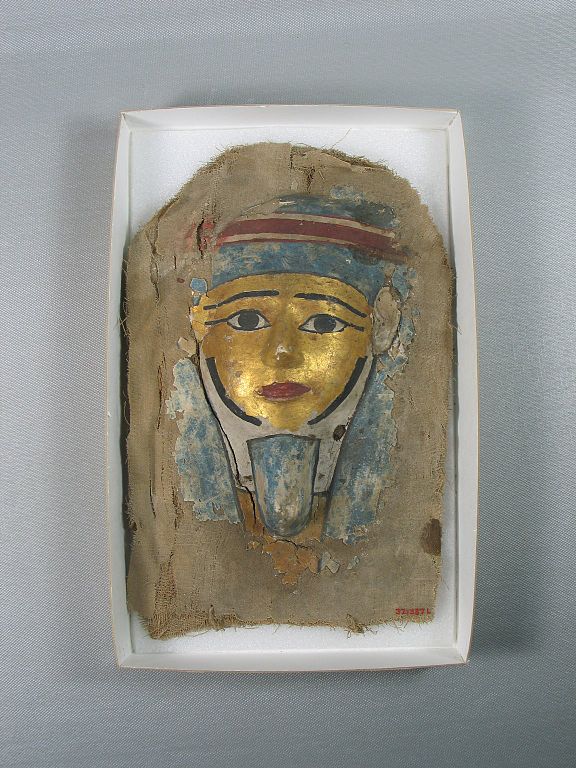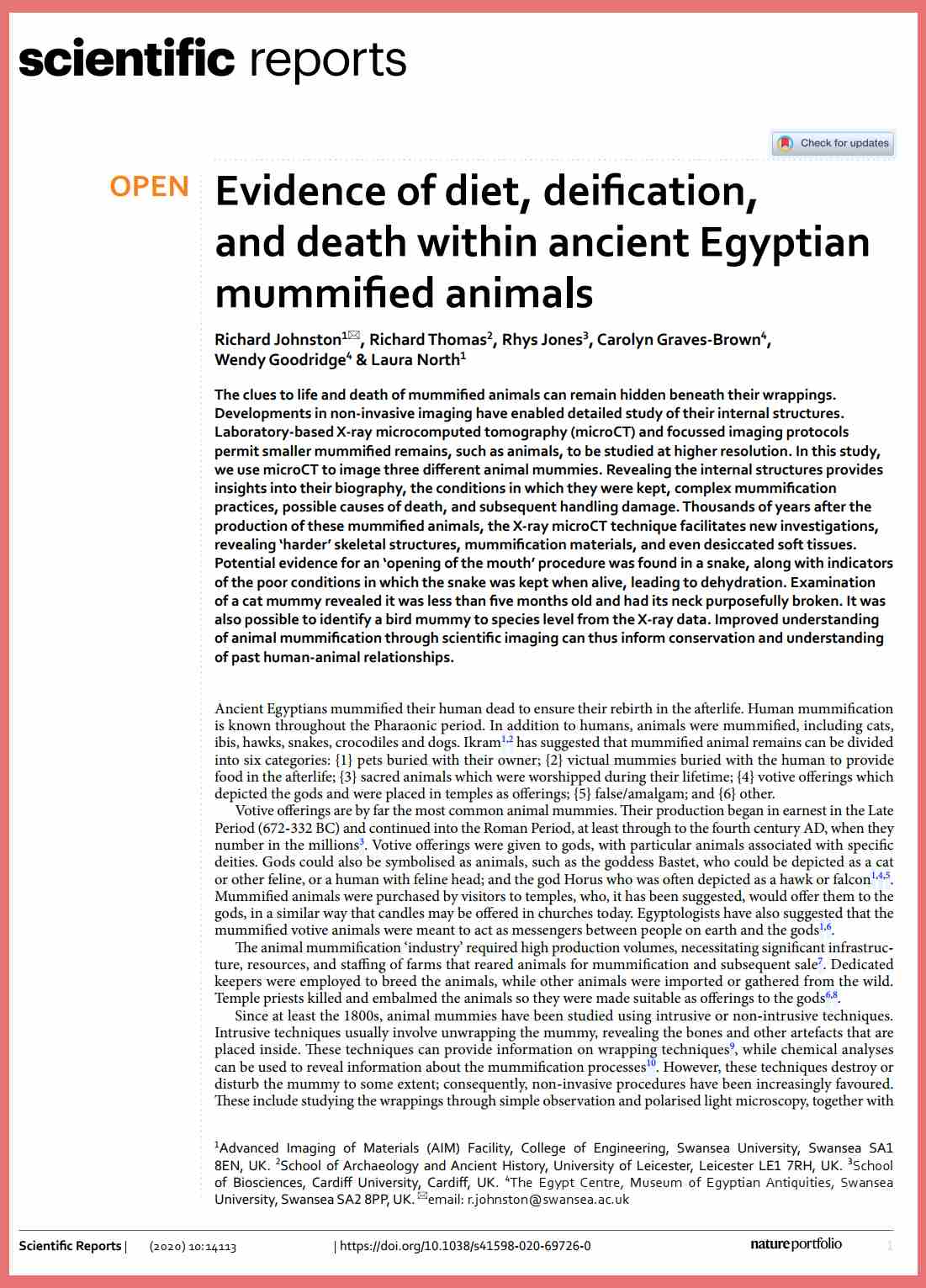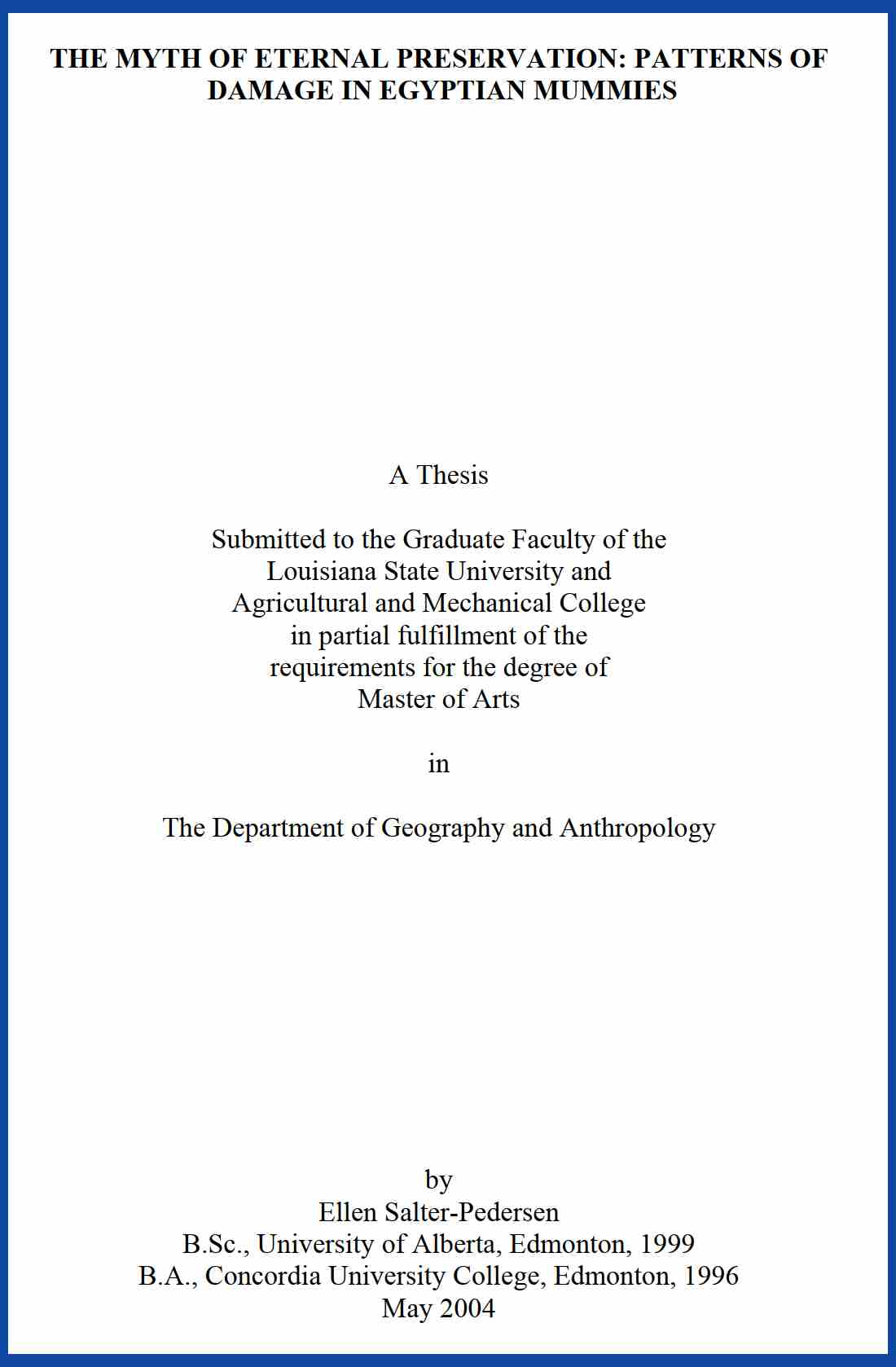Egyptian Mummies
Mummies can be found in several countries. For example, the Chinchorro settlement in Chile, South America, mummified the dead as early as 5000 BCE. This practice was also carried out during the Inca civilization between 13th and 16th century CE. Mummy remains of the indigenous Guanche people were found on Canary Islands, Atlantic Ocean. The most well-known mummies are those found in Egypt. Below is a picture of a Chinchorro mummy:

In ancient times, mummies were made mainly for religious reasons. For example, the Egyptians believed that after death they would have a new kind of life called the afterlife. As well as needing all their everyday possessions for the next life, they also needed their bodies. As a result, they needed to treat the dead bodies so they didn’t decay.
The process of treating dead bodies (commonly know as “embalming”) to slow down decay is called mummification. The main steps of the process are (1) taking out internal organs that might decade rapidly, and (2) removing as much as possible moisture from the body. In ancient Egypt, the mummification process took seventy days. Because religious ceremonies needed to be performed, special priests were assigned to work as embalmers to treat and wrap the body. Beyond knowing the correct rituals and prayers to be performed at various stages, the priests also needed a detailed knowledge of human anatomy. The first step in the process was the removal of all internal parts that might decay rapidly. The brain was removed by carefully inserting special hooked instruments up through the nostrils in order to pull out bits of brain tissue. It was a delicate operation, one which could easily disfigure the face. The embalmers then removed the organs of the abdomen and chest through a cut on the abdomen. They left only the heart in place, believing it to be the center of a person's being and intelligence. The other organs, such as the stomach, liver, and lungs were treated and preserved separately in special boxes or jars. These were buried with the mummy. In later mummies, the treated organs were wrapped and replaced within the body.
The embalmers next removed all moisture from the body. They performed this step by covering the body, inside and outside, with natron, a type of salt naturally available in Egypt. Natron has great drying properties. When the body had dried out completely, embalmers removed the natron from the body. The result was a very dried-out but recognizable human form. To make the mummy seem even more life-like, sunken areas of the body were filled out with linen and other materials and false eyes were added.
The wrapping began next. Each mummy needed hundreds of yards of linen. The priests carefully wound the long strips of linen around the body, sometimes even wrapping each finger and toe separately before wrapping the entire hand or foot. In order to protect the dead from mishap, amulets were placed among the wrappings and prayers and magical words written on some of the linen strips. Often the priests placed a mask of the person's face between the layers of head bandages. At several stages the object was coated with warm resin and the wrapping resumed once again. At last, the priests wrapped the final cloth or shroud in place and secured it with linen strips. Below is a picture of a mask from a mummy of the Middle Kingdom:

The finished mummy was then placed in a tomb. In addition, things that a person would need in the afterlife were also placed in the tomb. Furniture and statuettes were readied; wall paintings of religious or daily scenes were prepared; and lists of food or prayers finished. Egyptians believe that through a magical process, these models, pictures, and lists would become the real thing when needed in the afterlife. Everything was now ready for the funeral.
As part of the funeral, priests performed special religious rites at the tomb's entrance. The most important part of the ceremony was called the "opening of the mouth." A priest touched various parts of the mummy with a special instrument to "open" those parts of the body to the senses enjoyed in life and needed in the afterlife. By touching the instrument to the mouth, the dead person could now speak and eat. He was now ready for his journey to the afterlife. The mummy was placed in his coffin, or coffins, in the burial chamber and the entrance sealed up. Below is a drawing in the Book of the Dead of Hunefer (Hunefer was an Egyptian scribe during the 19th Dynasty) showing an opening of the mouth ceremony:

Below is a photo of the head of the mummy of Pharaoh Ramesses III, the second Pharaoh of the Twentieth Dynasty in ancient Egypt. He is thought to have reigned from 1186 to 1155 BCE and is considered to be the last great monarch of the New Kingdom to wield any substantial authority over Egypt:

Below is a photo of the coffin lid of Prince Hornakht of the 22nd Dynasty:

Below are publications on Egyptian mummies:
Computed Tomography Study of the Mummy of King Seqenenre Taa II: New Insights Into His Violent Death

Evidence of diet, deification, and death within ancient Egyptian mummified animals

The myth of eternal preservation: patterns of damage in Egyptian mummies
